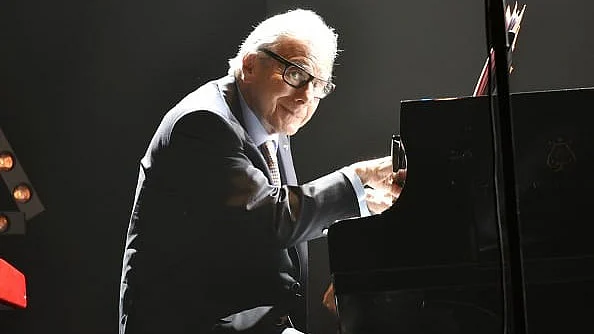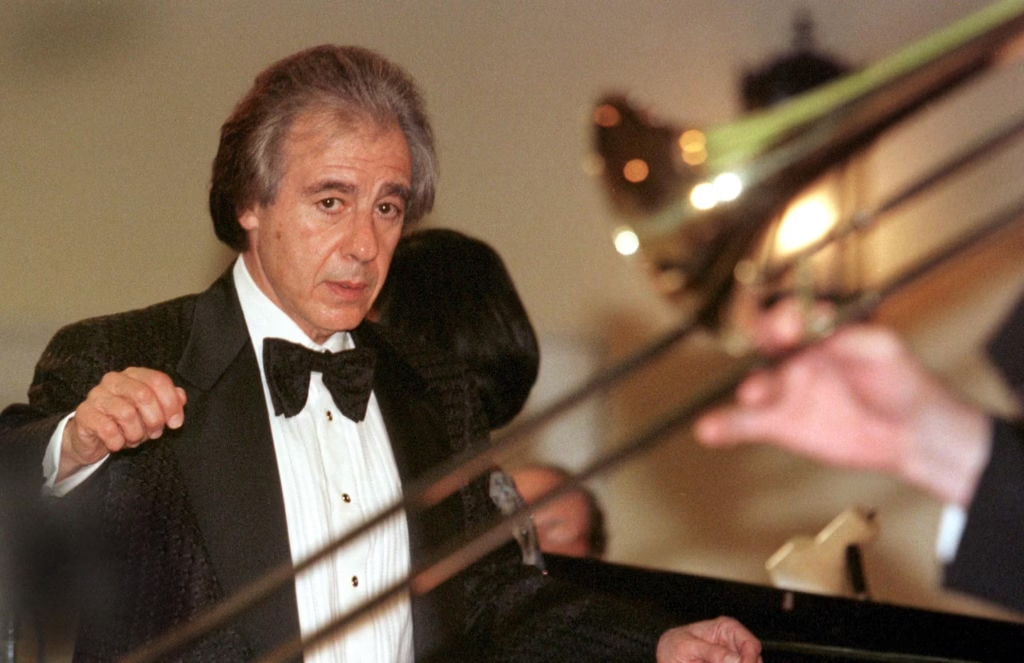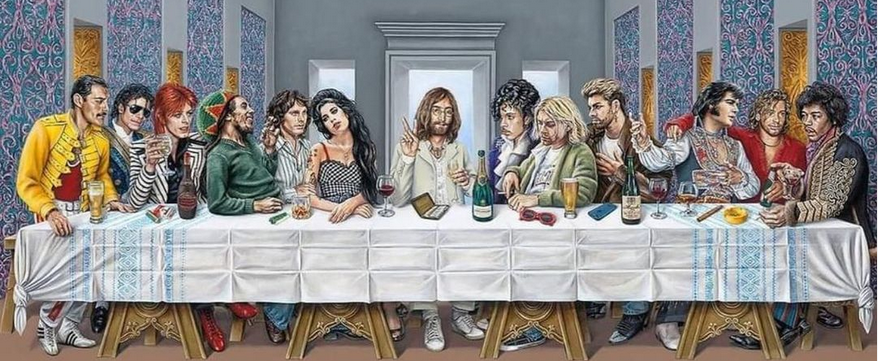
Lalo Schifrin: The Fusion Maestro of Cinema Music
Boris Claudio “Lalo” Schifrin, who passed away on June 26, 2025, at the age of 93, left behind a monumental legacy as one of the most versatile and inventive composers in film and television history. An Argentine-American pianist, composer, arranger, and conductor, Schifrin carved a unique niche in the music world by fusing jazz, classical, and Latin American idioms into cinematic scores that defined an era. His works have become part of the cultural lexicon, with themes like Mission: Impossible continuing to resonate with audiences across generations.
With a career that spanned over seven decades, Schifrin earned five Grammy Awards, received six Academy Award nominations, and was nominated for four Emmys. Yet, his contributions cannot merely be measured by accolades. Schifrin was a musical alchemist—an artist who crossed borders, both geographical and stylistic, to create something distinctly his own.
Early Life and Musical Foundations
Born on June 21, 1932, in Buenos Aires, Argentina, Lalo Schifrin was introduced to music at an early age. His father, Luis Schifrin, was a classical violinist and concertmaster of the Teatro Colón, one of the most prestigious opera houses in Latin America. Under such influence, Lalo began his formal piano studies at age six. Yet from the start, he displayed a restless musical curiosity that couldn’t be confined to the conservatory.
In his teenage years, Schifrin discovered jazz through the records of Dizzy Gillespie, Duke Ellington, and Thelonious Monk—music that offered a refreshing alternative to the rigidity of classical forms. While studying classical piano at the Paris Conservatoire in the early 1950s, Schifrin immersed himself in jazz clubs, playing gigs at night and absorbing modern harmonic language that would later influence his compositions.
Paris proved formative. Lalo Schifrin encountered other expatriate jazz musicians, and the multicultural music scene offered fertile ground for his hybrid approach. He studied under composer Olivier Messiaen, whose modal and rhythmic innovations would influence Schifrin’s own compositional thinking.
Return to Argentina and Early Career
Upon returning to Argentina in the mid-1950s, Lalo Schifrin became a pivotal figure in the country’s jazz scene. He formed a jazz orchestra and also began composing for radio, theater, and film. But Argentina proved too small for his ambitions. In 1956, he scored a meeting with Dizzy Gillespie, who was touring South America. Impressed by Schifrin’s abilities, Gillespie invited him to join his big band in the United States.
This marked the beginning of Schifrin’s American career. After joining Gillespie in 1960 as pianist and arranger, Schifrin wrote one of the band’s most ambitious compositions: Gillespiana, a five-movement suite that blended Afro-Cuban rhythms with big-band jazz and classical structures. It was a statement of purpose—Schifrin announcing his arrival as a serious and adventurous musical mind.
Hollywood Beckons: Rise to Fame in the 1960s
Lalo Schifrin relocated to Los Angeles in the early 1960s, where his combination of jazz and orchestral technique caught the attention of Hollywood producers. He quickly gained a reputation as a composer who could bring a fresh, modern edge to film and television scores.
His breakthrough came in 1966 with the theme for the television series Mission: Impossible. Built on an unusual 5/4 time signature and driven by syncopated rhythm, the theme became one of the most iconic pieces of television music ever written. It also exemplified Schifrin’s signature approach: complex rhythmic structures, bold orchestration, and the fusion of jazz harmonies with cinematic tension.
Throughout the 1960s and ’70s, Schifrin became one of Hollywood’s most in-demand composers. He wrote scores for a series of influential films, including Cool Hand Luke (1967), Bullitt (1968), and Dirty Harry (1971). Each of these scores showcased Schifrin’s versatility. The Bullitt score, for example, featured cool jazz textures layered over minimalist motifs, while Dirty Harry introduced funk and psychedelic rock elements into the crime thriller genre.
Musical Style and Innovations
What made Lalo Schifrin stand out among his contemporaries was not just his technical skill, but his boundary-crossing musical philosophy. He was a musical polyglot, fluent in the languages of bebop, tango, serialism, Afro-Cuban rhythms, and classical counterpoint.
A hallmark of Schifrin’s style was rhythmic complexity. He was unafraid to use odd meters, polyrhythms, and shifting grooves. Harmonically, his work incorporated lush jazz chords, modal tonalities, and occasional atonality. Yet even at his most experimental, his music remained accessible and dramatically effective.
Another Schifrin innovation was the integration of Latin American musical forms into mainstream film scores. While Hollywood had occasionally flirted with Latin themes, Schifrin brought authenticity and depth. His Argentine roots—particularly his familiarity with tango, milonga, and chacarera—added nuance and texture to his scores, creating soundscapes that were both global and personal.
Collaboration and Conducting
Lalo Schifrin collaborated with some of the biggest names in film and music. In addition to Gillespie, he worked with artists such as Sarah Vaughan, Stan Getz, and Ray Brown. He composed concert works for the London Philharmonic and frequently conducted major orchestras around the world.

.
He also served as a bridge between popular and classical traditions. His Jazz Meets the Symphony series, launched in the 1990s, exemplified this mission. These works blended classical symphonic frameworks with jazz improvisation, often featuring top-tier soloists. The series was both a critical and commercial success, proving Schifrin’s continued relevance in the concert world.
Awards and Recognition
Lalo Schifrin’s contributions were recognized with numerous honors. Over his career, he won five Grammy Awards, including Best Instrumental Arrangement and Best Album of Original Score. He was nominated for six Academy Awards, although he never won—a curious oversight, given the enduring popularity of his work.
In 2018, he received an honorary Oscar for lifetime achievement, finally acknowledging the profound influence he had on the art of film scoring. In his acceptance speech, Schifrin thanked his mentors, his collaborators, and the immigrant journey that had brought him from Buenos Aires to Hollywood.
He was also recognized internationally, receiving the Commander of the Order of Arts and Letters from France, and honorary doctorates from various institutions.
Later Life and Legacy
Lalo Schifrin remained musically active well into his 80s. He continued composing, conducting, and mentoring younger musicians. Though he slowed down in the last decade of his life, his presence in music remained strong through reissues, retrospectives, and the continued popularity of his themes in remakes and tributes.
The Mission: Impossible theme, for instance, was reimagined in various incarnations throughout the blockbuster film series starring Tom Cruise. Yet in each case, the core identity—the rhythmic punch and harmonic tension—was unmistakably Schifrin’s.
Beyond specific themes, Schifrin’s real legacy lies in his approach to composition. He challenged the rigid dichotomies of “high” and “low” art, classical and popular, North and South, past and present. He helped shape a new model for the film composer—not just as a technician, but as an artist, an innovator, and a cultural translator.
Conclusion
Lalo Schifrin’s passing on June 26, 2025, marked the end of a remarkable life, but not the end of his influence. His music continues to inspire composers, filmmakers, and audiences. He leaves behind a body of work that transcends genre, geography, and time. In an era increasingly defined by cross-cultural exchange, Schifrin was a pioneer—a man who understood that music, in all its forms, is a universal language.
From Buenos Aires to Hollywood, from bebop to Brahms, from spy thrillers to symphonies, Lalo Schifrin’s journey was as expansive as his music. His melodies swing, his harmonies challenge, and his rhythms pulse with life. As long as there are stories to tell through sound, Lalo Schifrin’s voice will remain part of the conversation.
Check out Lalo Schifrin on Amazon by clicking here.
If you found this interesting please share it with your friends and family, and check out some of our other articles on Musicians who Died in 2025.
.

